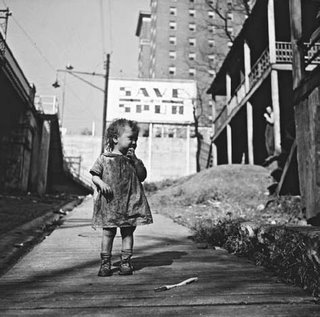Tempus Fugit
Diário contemporâneo
sexta-feira, janeiro 26, 2007
Calling all angels... II
"As Asas do Desejo" é uma homenagem de Wim Wenders, cheia de compaixão e esperança, à humanidade e ao indivíduo, a cada um de nós que a compõe.
Mas este não foi o primeiro filme que vi com a Solveig Dommartin. Antes, vi "Até ao Fim do Mundo" ("Until the End of the World"), filme posterior de Wim Wenders (de 1991). Tenho especial carinho por ele, porque foi um dos filme que me despertou a curiosidade para o cinema. Este thriller-road-movie de ficção-científica, passado no ano 1999, conta a história de Sam Farber (William Hurt) que corre o mundo registando imagens com uma máquina especial que permite os cegos verem.
Depois há Claire Tourneur (Solveig) que se vai cruzar, por desígnios do destino, com ele. O filme, que tem também como pano de fundo as incertezas da passagem para um novo milénio, foi rodado em vários locais, incluindo Lisboa, Berlim, Moscovo, Los Angeles, para terminar na Nova Zelândia. Uma referência ainda à magnífica banda-sonora, com música original de Nick Cave (que, já agora, também entra n' "As Asas do Desejo"), K.D. Lang, Talking Heads, Julee Cruise, Lou Reed, R.E.M., Elvis Costello, Depeche Mode, Patti Smith, U2, entre outros.
Tenho pena que o filme ainda não tenha sido editado por cá em DVD.
quarta-feira, janeiro 24, 2007
sábado, janeiro 20, 2007
Calling all angels... I
Este post já vai longo, continuo no próximo que ainda tenho muito para dizer...
quinta-feira, janeiro 18, 2007
Entre o bem e o mal em tempestades de areia
sexta-feira, janeiro 12, 2007
Annemarie Schwarzenbach nos EUA II
America’s Iron City, 1937
I had been prepped like a war correspondent about to depart for the front lines. I had even been warned. The General Motors strike was in full swing. In Washington, I had been able to gain an overview of the aims of the struggle and of the entire American labor movement. I knew that the issue was not pay raises but fundamental demands of enormous import. The slogans “Industrial Union” versus “Craft Union” or “Company Union” were as familiar to me as the concept of “collective bargaining,” recommended by Roosevelt himself as a solution to the problem of strikes but bitterly opposed by the owners of the companies because it would give workers a legal basis and legal representation for their demands. The labor leader John L. Lewis, a Welsh miner, was demanding recognition for his Industrial Unions as representatives of all workers and employees united within an industry. The entrepreneurs feared him more than the entire Communist Party (of which he is not a member)—many already considered him the most powerful man in America.
There was a certain willingness to accommodate the workers by granting them a degree of quasirepresentation within the factory—a manageable arrangement, since the workers’ chosen representatives were company employees and could therefore be fired if necessary. But no one wanted “outside interference” from an independent union leader like John L. Lewis, who was not only powerful but had the effrontery of negotiating on an equal footing with the company bosses and directors. (...)"
(Annemarie Schwarzenbach)
quinta-feira, janeiro 11, 2007
Annemarie Schwarzenbach nos EUA

(Westfront Street, Knoxville, Tennessee, 1937)
The Dark Side of Knoxville, 1937
"The vision of a better life, the American Dream, becomes more and more clouded as the road leads south. Land, parched by the long summer days, grows rusty in the dry air of poverty which has lasted for seventy years. In the great Tennessee River Valley, the blushing autumn leaves light up the hills and the red earth gushes from deep crevasses where the air and water are hollowed out of the cavities. The forests that once covered and protected the region have now disappeared, the blackened tree trunks and white pebbles are scattered throughout the meager fields that support a little corn, potato, and sugar cane, too little to feed the farmer and his family. The river flows slowly in the direction of the Ohio plains. All along the riverbanks are the traces of destruction caused by the torrential rains: crushed farmhouses, empty window frames, collapsing pillars, uprooted wooden fences, and deserted pastures.
With its one hundred thousand inhabitants, Knoxville is one of the urban centers situated in a region not favored by nature: its people have not succeeded in protecting their lands against the destructive force of the river and therefore have managed to assure themselves of an existence nothing short of miserable. The Tennessee River Valley, with a total population of two and a half million, is becoming one of the most poverty-stricken and most poorly developed regions in America. (...)"
(Annemarie Schwarzenbach)





